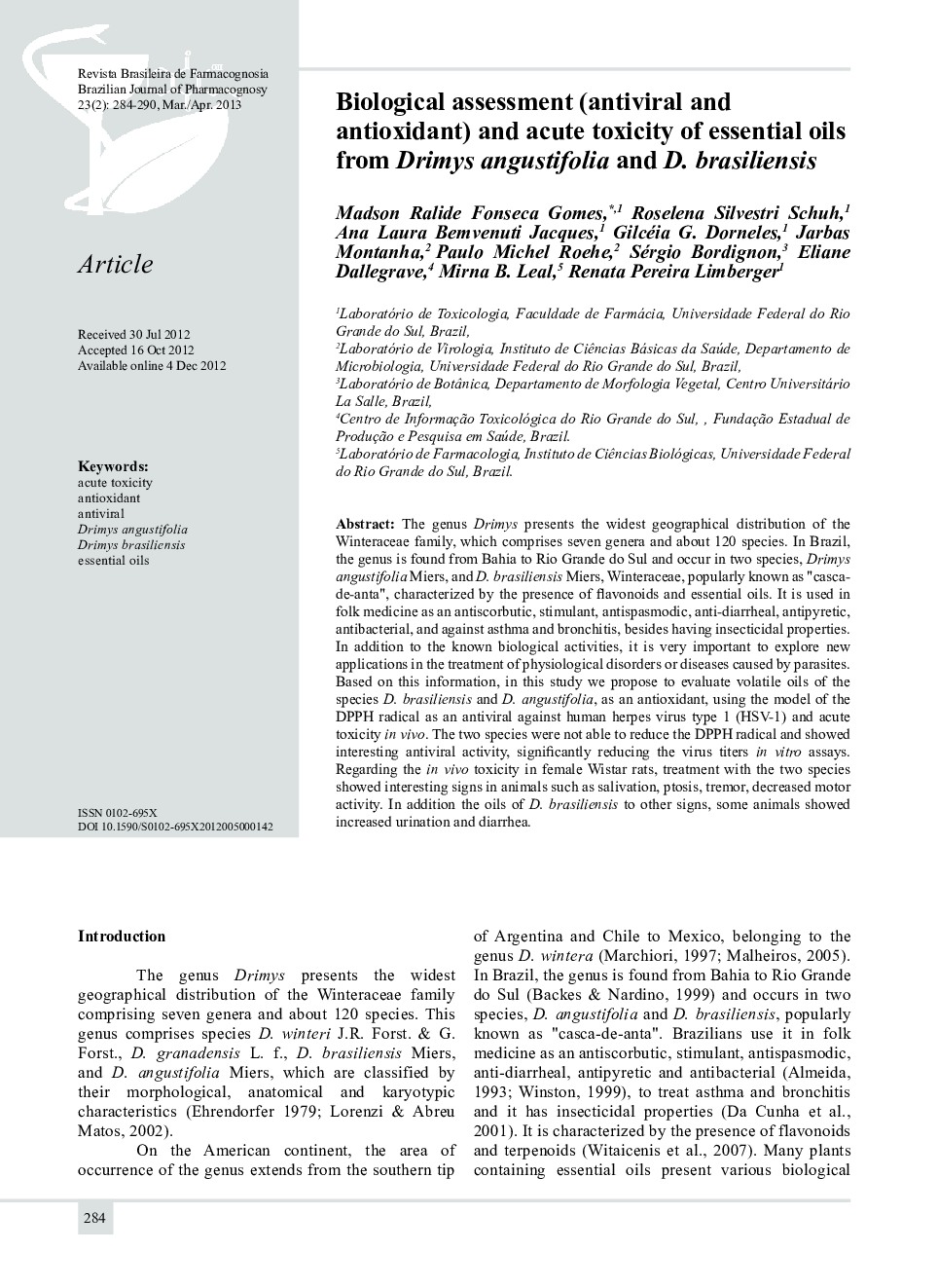| کد مقاله | کد نشریه | سال انتشار | مقاله انگلیسی | نسخه تمام متن |
|---|---|---|---|---|
| 2577862 | 1129965 | 2013 | 7 صفحه PDF | دانلود رایگان |

The genus Drimys presents the widest geographical distribution of the Winteraceae family, which comprises seven genera and about 120 species. In Brazil, the genus is found from Bahia to Rio Grande do Sul and occur in two species, Drimys angustifolia Miers, and D. brasiliensis Miers, Winteraceae, popularly known as “cascade- anta”, characterized by the presence of fl avonoids and essential oils. It is used in folk medicine as an antiscorbutic, stimulant, antispasmodic, anti-diarrheal, antipyretic, antibacterial, and against asthma and bronchitis, besides having insecticidal properties. In addition to the known biological activities, it is very important to explore new applications in the treatment of physiological disorders or diseases caused by parasites. Based on this information, in this study we propose to evaluate volatile oils of the species D. brasiliensis and D. angustifolia, as an antioxidant, using the model of the DPPH radical as an antiviral against human herpes virus type 1 (HSV-1) and acute toxicity in vivo. The two species were not able to reduce the DPPH radical and showed interesting antiviral activity, signifi cantly reducing the virus titers in vitro assays. Regarding the in vivo toxicity in female Wistar rats, treatment with the two species showed interesting signs in animals such as salivation, ptosis, tremor, decreased motor activity. In addition the oils of D. brasiliensis to other signs, some animals showed increased urination and diarrhea.
Journal: Revista Brasileira de Farmacognosia - Volume 23, Issue 2, March–April 2013, Pages 284-290